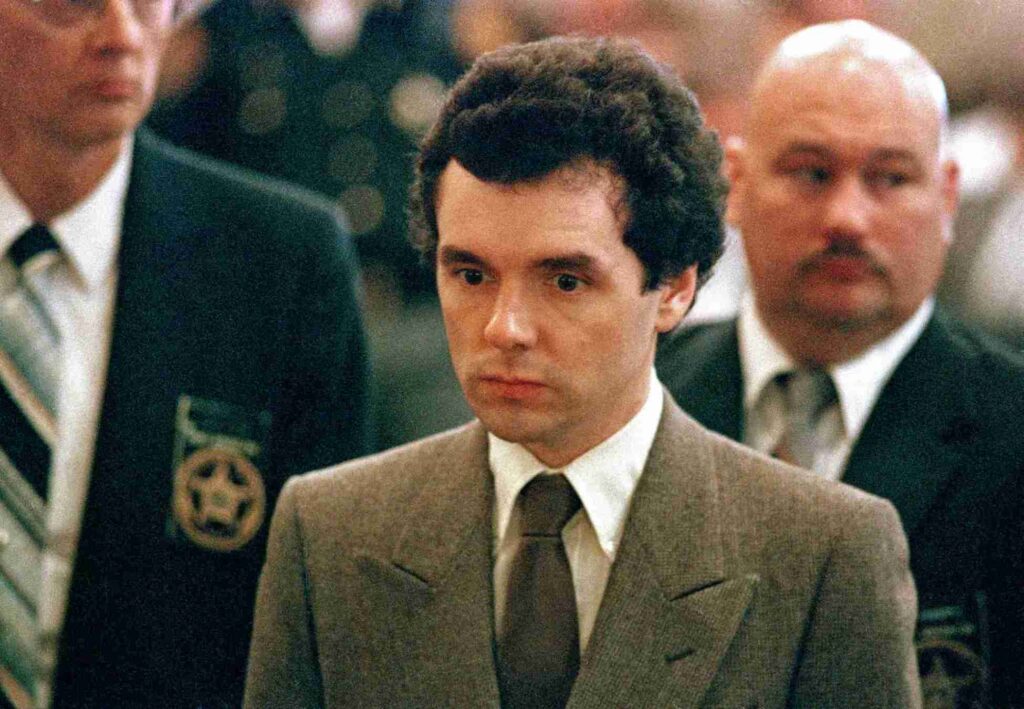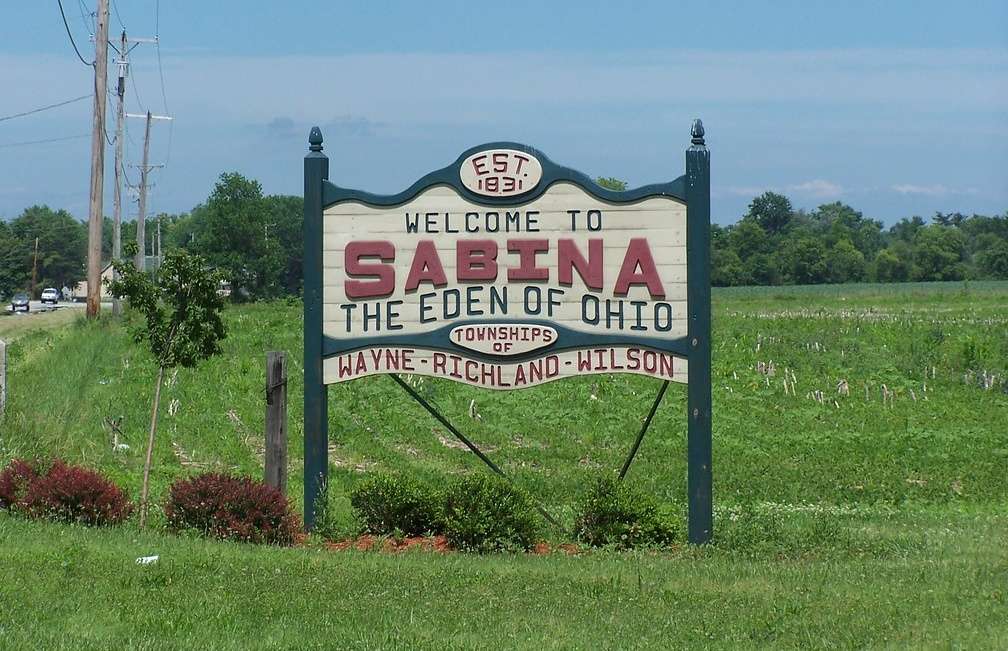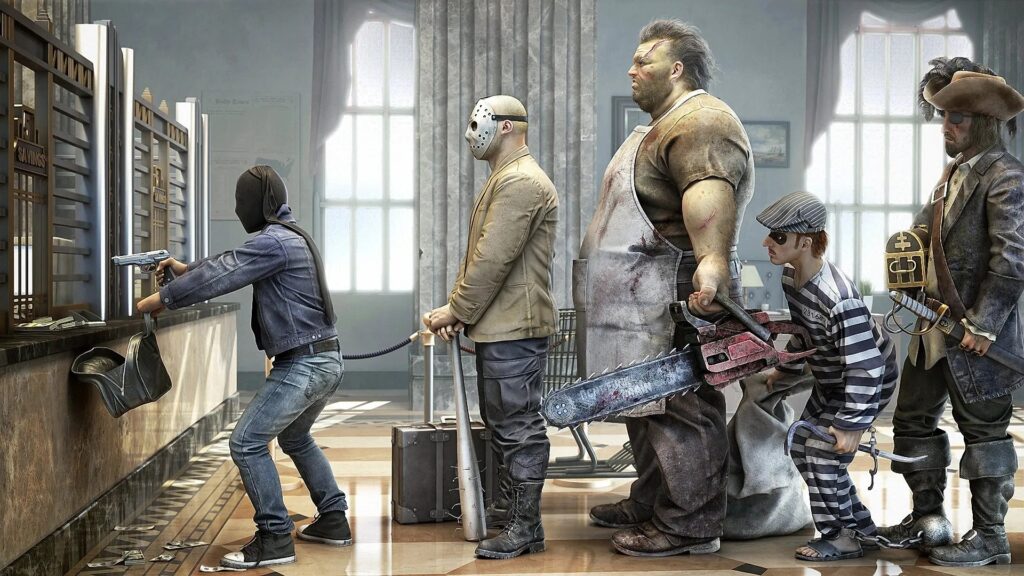In 1978, most people would have described Donald Harvey as a shy or unassuming 35 year old nurse’s aide. There was nothing all that special about the guy, nothing about the way he looked demanded anybody’s attention. In nearly every way, he was about as common as you could possibly get. Well, except for the fact that he kind of confessed to killing a whole bunch of people between then and 1970.
These murders shocked not just the communities of northern Kentucky and southern Ohio where he had been employed – but the world. If you asked anybody back then what a serial killer or mass murderer looked like – that image would likely be the farthest thing from Donald Harvey as you could get.
Donald Harvey had also spent his entire career up to that point as a nurse’s aide – a job usually associated with people who are passionate about helping others, not ending their lives or making them sick.
Yet, that is exactly what happened. That kind of makes you wonder what the hack happened?
Donald Harvey’s Childhood
Shortly after he was born, Donald’s parents moved from Hamilton, Ohio to Booneville, Kentucky, a small Appalachian foothills community. The people who remembered him from there all say he was a well-groomed, well-mannered lad, always friendly and smiling. Others called him a “teacher’s pet” and a bit of a loner.
By the time he reached high school, his teachers would describe him as a good student, at least at first. As time went on, he seemed to get bored easily, his grades falling until at some point during his sophomore year, he dropped out.
According to some sources, while Donald was living in Booneville, he was sexually assaulted by two men, one a neighbor, the other the boy’s uncle. The only person he is believed to have talked about this was his sister, and well after the abuse ended. This abuse could explain the sudden drop in his grades (if true) or it could explain what happened as soon as he had dropped out. He moved to Cincinnati.
He didn’t get to stay in town for long, though. His mother got in touch and pleaded for him to return while giving him some terrible news. She feared that his grandfather was nearing the end of his life, a plea that Donald couldn’t ignore.
Back in Kentucky, he spent a lot of time visiting his grandfather at the London, Kentucky hospital. The nuns who ran the place liked him so much, they persuaded him to apply for a job at the hospital, as an orderly. Without too many plans for his own future, he jumped on the opportunity. It also sounded better than the factory work he would have likely gone back to.
March 31, 1971
On March 31, 1971, Donald Harvey would be arrested on suspicion of burglary, but there was one slight problem. While detectives tried to interrogate the man about the burglary, it quickly became clear that the man was very inebriated. And, as drunk people have this weird tendency to do – he started saying some very odd things.
Like … I don’t know … confessing to a bunch of murders.
Even though Donald wasn’t shy about many deadly details, the police had a very hard time charging him because they couldn’t find any evidence that corroborated what he was saying. So, they charged him with theft, he accepted a plea bargain and pled guilty to petty theft and was sentenced to pay a small fine.
Perhaps he was feeling the need for a change in his life … or, maybe for other reasons … his next move was to join the military.
Donald Harvey enlisted in the United States Air Force, a new career path that didn’t even last a year. He would be generally discharged, although the exact reason why might not be known. Some believe the military suspected he might be gay. Others suggest that it might have been his recent murder confessions coming back to haunt him – but, either way he was out.
It wouldn’t be long before he was trying to check himself into a VA hospital after an unsuccessful suicide attempt and complaining of severe depression. Part of his treatment included electroshock therapy. When he was released, his mother was worried that they had let him free too early.
Within a year, he had accepted not one, but two job – first, as a nurse’s aide at a hospital in Lexington, Kentucky, then as a nursing aid at a different Lexington facility. However, the following year he relocated again to Cincinnati, taking a job at the VA Hospital there. He was working nights … with limited supervision.
Home Life
In the early 1980s, Dennis met Carl Hoeweler and the two men appeared to fall in love. Almost immediately, Carl started getting sick … a lot … and at first he likely seemed relieved that he was dating (and living with) a medical professional, yet oddly he never quite got better. Then, a year or so later, Dennis got into a confrontation with a neighbor and she, too, came down with the same symptoms. She was rushed to the hospital and died a week later. Then another neighbor died, once again someone who Dennis seemed to have a beef with. Carl’s brother also died after being mistakenly given grain alcohol (as opposed to vodka) and then his father also died.
It wouldn’t be long before the couple broke up and as Carl was fearing for his life. For some reason, he was convinced that his now-ex partner was trying outright kill him. He hoped he was wrong, but his intuition was screaming that something was amiss.
July 18, 1985
On July 18, 1985, Dennis’ life once again got temporarily complicated. As he was leaving work, he caught the eye of a security guard who began to wonder if the man was up to something. Before he was allowed to leave, the guard informed him that he would need to search his bag.
Inside his backpack, the guard discovered a .38-caliber pistol, as well as a number of other items, including a cocaine spoon, surgical scissors and gloves, various medical needles and texts, and some books on the occult. The hospital decided, rather than make a big deal out of this, he was given the choice to quit, rather than be fired and prosecuted for the handgun possession. Dennis quit his job.
The following year, Dennis would take his final position, this one as a part-time nurse’s aide at Cincinnati’s Drake Memorial Hospital. Thirteen months later, a young man named John Powell would enter the hospital.
John Powell & The Angel of Death
When John Powell entered the Drake Memorial, things looked bleak for him and soon he was in a coma. However, by March, 1986 (a few months after he went in) things were looking much, much better. So, it came as a major surprise to everyone when he died. Soon, an autopsy would take place. As the coroner was beginning the procedure, the noticed the faint scent of almonds – which anyone in his profession would know is a telltale sign of arsenic poisoning.
The police began to investigate Powell’s untimely death as a homicide, focusing on his family and friends. After many days, they were getting nowhere. They did not believe that anyone related to him, nor any of his friends had any reason to kill the man, had nothing to gain, so the police felt like they had to start looking elsewhere.
When they could not find any leads whatsoever, they started looking at hospital staff. And there was one employee that almost instantly came to their attention, a man named Donald Harvey. They called him The Angel of Death. This was not because they suspected that Donald was killing anybody – it was more because he was present at a higher than usual number of hospital deaths, and because he seemed to give extra special attention to many of the people who would suffer that fate. To the police, who did not know the man, however – their suspicions were suddenly raised.
The police secured a search warrant for his apartment, and it became immediately apparent they had their killer. Inside, they found jars of arsenic (and other poisons). Then they discovered his diary. In this diary, he confessed to killing John Powell.
When he was brought in to be charged and officially interrogated, he confessed. What surprised most everyone who knew him, he confessed to more than just killing John Powell. He confessed to killing a lot more people. A lot more.
He confessed to killing about fifty people, starting with his first nursing job in Kentucky and ending with his last kill at Drake.
The Mystery of Donald Harvey
The one question that was on everyone’s mind was … Why? Harvey fit many of the qualifications to be called a serial killer, but something still seemed off. So, was he a new breed of killer? Or was there some other explanation?
We may never know the exact reasons behind the killings … nor will we know how many people he murdered over such a long career. While he confessed to nearly fifty, because he often worked with little (or no) supervision, and often worked around people who were expected to die anyway, there is no way to tell. It’s also impossible to tell if there were additional people he tried to kill but managed to somehow survive.
Harvey tried to convince the justice system that he was legally insane, but that ploy didn’t work nearly as well as he thought it would.
A great number of his murders, he claimed, were mercy killings – an attempt to end the suffering of terminal patients he said had no chance of getting better. Powell’s medical recovery before his murder counteracts this theory, however this may have been the case for many of the others.
Donald Harvey did admit that he tried to kill his lover, although that was not his goal at first. For some reason, he had doubts that Hoeweler was being faithful, although he couldn’t prove the man was having an affair. He fed his partner small amounts of arsenic, not to kill him, but to make him so sick he woudln’t be able to leave the house and hook up with another man. It wasn’t until after the pair had broken up that he attempted to kill the man. His ex, however, never seemed to take the bait.
According to Harvey, killing Hoeweler’s father was an unintentional accident, although it did fit a secondary pattern. There were several people, including a couple of neighbors who had commented on their relationship – comments that (according to Harvey) led him to think they were trying to break the couple up. Hoeweler’s father made similar comments, as did his brother – shortly before their untimely deaths.
Nothing that I have read about this case suggests that any of these people were homophobic or had any interest in breaking the couple up. If Harvey really did believe this – he seems to have taken his reasons why with him.
Donald Harvey was not the first medical professional turned murderer, nor was the even the first to get the “Angel of Death” monicker. But, he was one of the more prolific (we think) and investigators and researchers have learned so much from his methods and various interviews.
He was also one of the catalysts that the medical community needed in order to start enacting changes, set to hold medical professionals responsible for times when people pass away while under their care.
The Story Comes to An End
On March 30, 2017, Donald Harvey was found dead in his prison cell – his cause of death officially “blunt force trauma”. His killer was quickly identified as a fellow inmate.



